The phrase “Big Boy” might make you think of hamburgers. But in certain parts of the country, especially since 2019, it means something very different. The largest steam locomotives in the world were also called “Big Boy,” and 25 were built for the Union Pacific Railroad in the mid-20th century. Only one is still functioning, and after passing through Kansas City on a tour in late 2019, returned again this week. That first time, I photographed it cruising through the countryside outside KC. This time I wanted to do something different.
If, in your mind, you picture an old steam locomotive, the odds are good that you’re thinking of a photo by O. Winston Link. In the 1950s he made it his mission to not just document, but create some beautiful photos of these iron kings of the rails. Those pictures are particularly impressive when you consider the state of photography then, and that most of his iconic photos were taken at night, as he took primitive flash technology to its limits. I had no plans to work that hard, but liked the idea of photographing Big Boy at night.
Knowing that it was scheduled to leave at 8am Thursday morning, and that sunrise was at 6:49am, I arrived at Kansas City’s Union Station a little before 6. I was familiar with the area, and also used Google Maps (satellite view) to do more scouting. With a big subject like that (132-ft long, 1.2 million lbs), I knew I wanted to shoot it from a high angle (not ground level). There’s a highway bridge just east of the station, which the engine would be facing. I hoped that would work, but a friend also let me know that there was a decent angle from the top of a parking garage by the station. After parking there this morning, I checked the roof angle, but felt the streetlights in the foreground would be a problem. So I headed to the bridge.
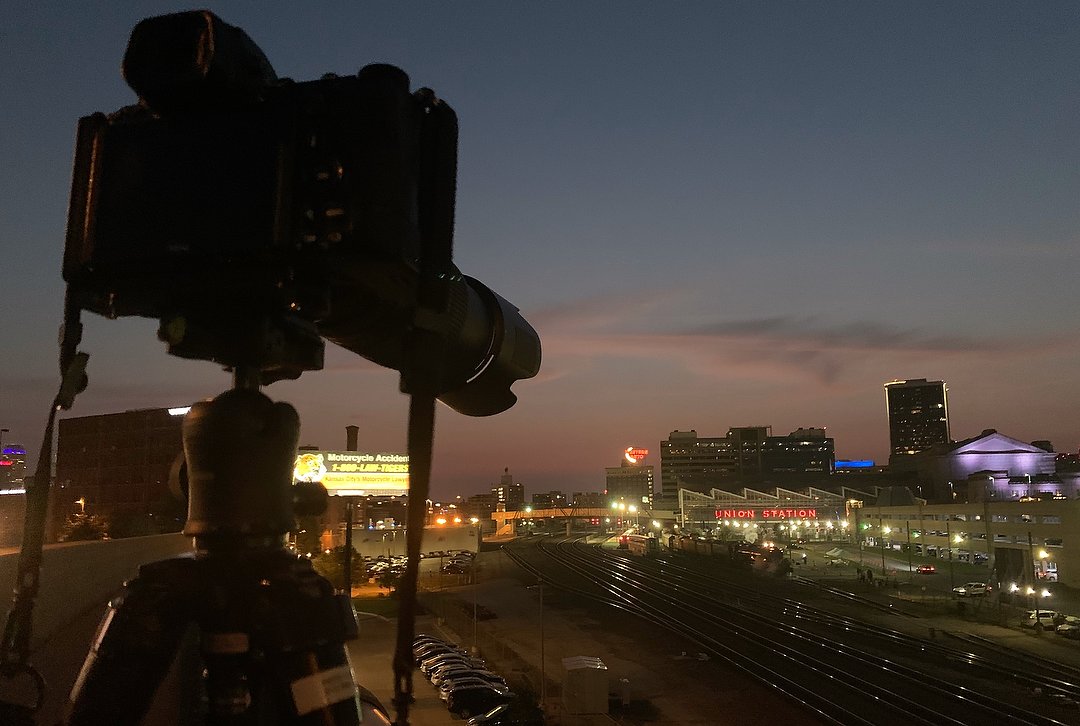
Here, with this photo from my phone, you get a good idea of how far away I was. For both of the photos (below) before sunrise, I used my Nikon Z 6 II and Nikkor 70-300mm f/4.5-5.6 AF-P lens. Mounted on a tripod, I turned on Silent mode (no shutter action) and set the Exposure Delay to one-second, both to minimize camera movement.
Once there I could see the angle would work well, letting me frame the neon “Union Station” sign behind the engine with my telephoto lens. But there were a couple of problems, too. For one thing, a white truck was parked next to it, facing me, with its headlights on. Thankfully, it was soon moved. A bigger problem was that the engine was black, in poor light, much darker than the area behind it. In photography, “Dynamic Range” is the difference between the brightest and darkest areas in a scene. Every camera has a limit to how large a range it can record before the bright areas are overexposed (no color or detail) and/or the dark areas are underexposed (no color or detail). In that case a photographer has a couple of options. The first one I chose was to wait for the sky to brighten a bit, then find an exposure that was between the neon sign and the black. Using a camera that has excellent dynamic range (Nikon Z 6 II), and helping that by staying at a low ISO (100), I was able to record an image that held enough detail in both the bright and dark areas to let me adjust them afterwards in software.
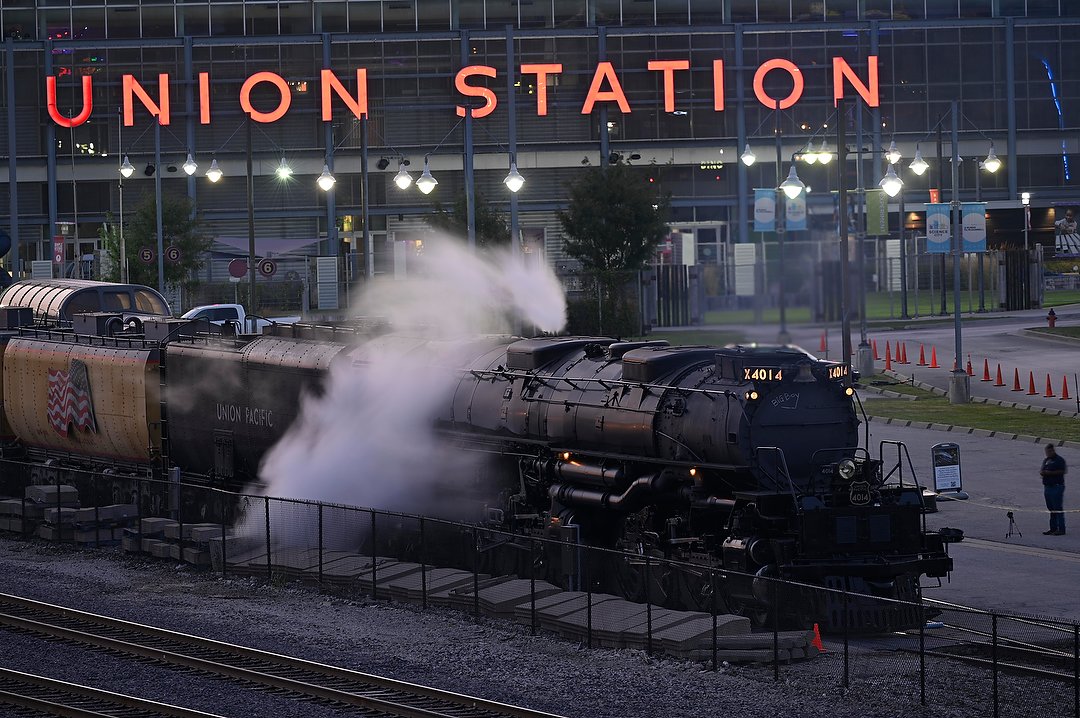
By 6:33am there was just enough light in the area for me to find an exposure that held good detail in both the sign and the engine. This is the original capture from the camera. Nikon Z 6 II, Aperture Priority, Sunny white balance, ISO 100, one second at f/8 in Matrix metering, -0.7 EV, Nikkor VR 70-300mm f/4.5-5.6E lens at 250mm.
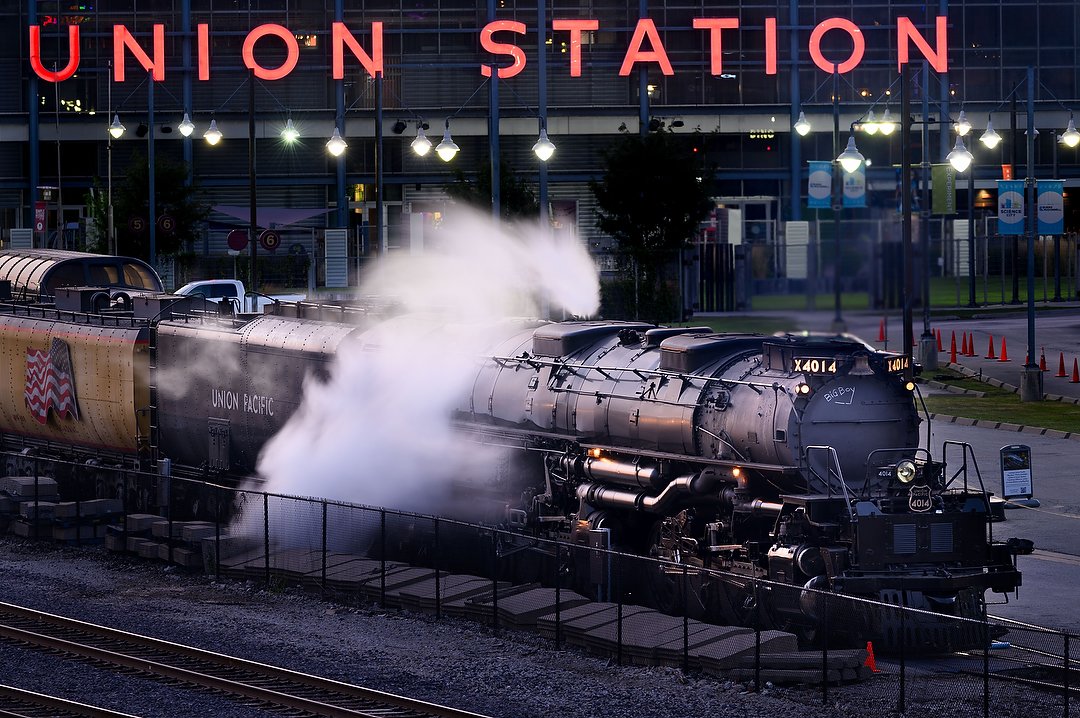
And here’s the finished image, after I worked on it in Adobe Camera Raw. Nikon Z 6 II, Aperture Priority, Sunny white balance, ISO 100, one second at f/8 in Matrix metering, -0.7 EV, Nikkor VR 70-300mm f/4.5-5.6E lens at 250mm.
At the same time, the sky behind the engine was starting to glow pink. Changing my framing to include that, the sky also made my dynamic range problem worse. It was much brighter than the foreground, which meant I couldn’t get a good image with one exposure, even with editing afterwards. So I used a different technique, something called HDR (“High Dynamic Range” imaging). With the camera on a tripod, I shot the same scene four times, changing only my shutter speed. That gave me one frame with the engine properly exposed, one with the sky properly exposed, and two in between. Using software afterwards (Aurora HDR in this case), I was able to merge those four exposures, then edit that combined image to create the final photo. This is how I like to use HDR, to allow me to show people, with one finished image, how the scene looked to my eyes, getting around a camera’s dynamic range limitations. And that’s when the Union Station sign was turned off, which was a sign to me to go find other photos.
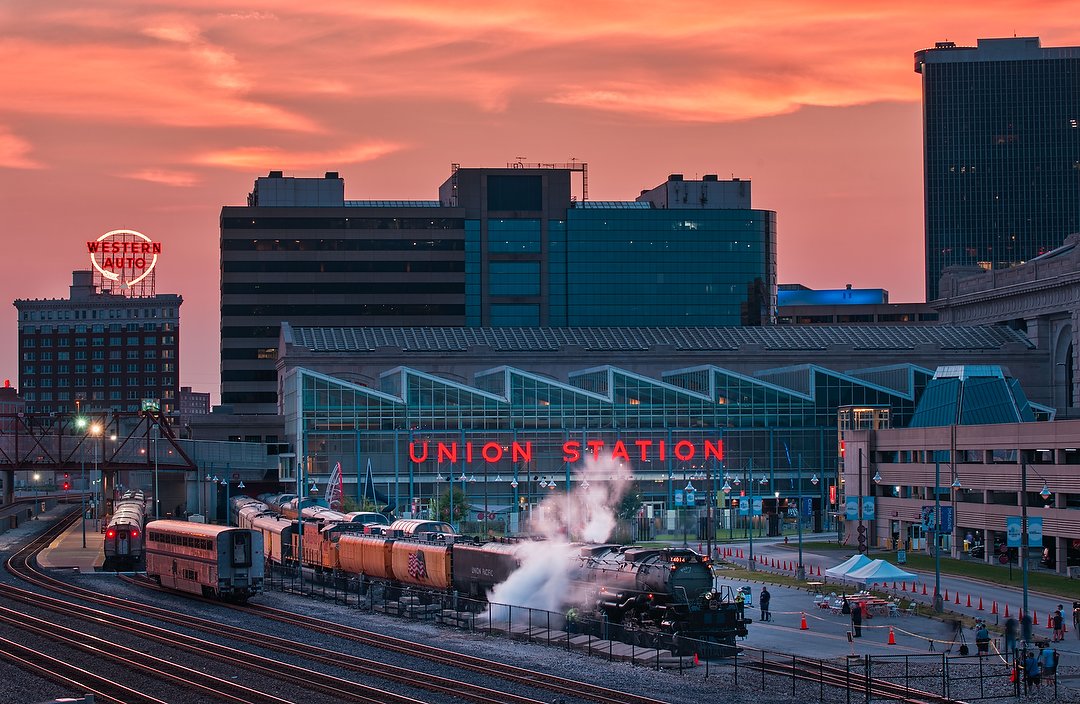
There was a nice glow in the sky a few minutes before sunrise (at 6:49am), but it was much brighter than the foreground area with the train. To make this image, I shot four frames, on a tripod, from 1/8 to one-second, all at 100 ISO and f/11. Combining them in software, I was able to get the best from each frame to make this final image, which is more like how my eyes were seeing the scene, as opposed to the limits of how the camera could record it. Nikon Z 6 II, Aperture Priority, Sunny white balance, Nikkor VR 70-300mm f/4.5-5.6E lens at 85mm.
Now I returned to ground level and close to the engine, where people were gathering to watch it leave. I didn’t like that lower angle to photograph the engine itself, but there were lots of other things, and people, to make pictures of. I also returned to the roof of the garage, which gave me yet another angle to work with. When I go out to take pictures, I usually have an image in mind that I’d like to make. But I also try to be open to whatever else I find, and if possible, try to tell a story with those photos. Moving around, finding different places to shoot from, helps me do that.
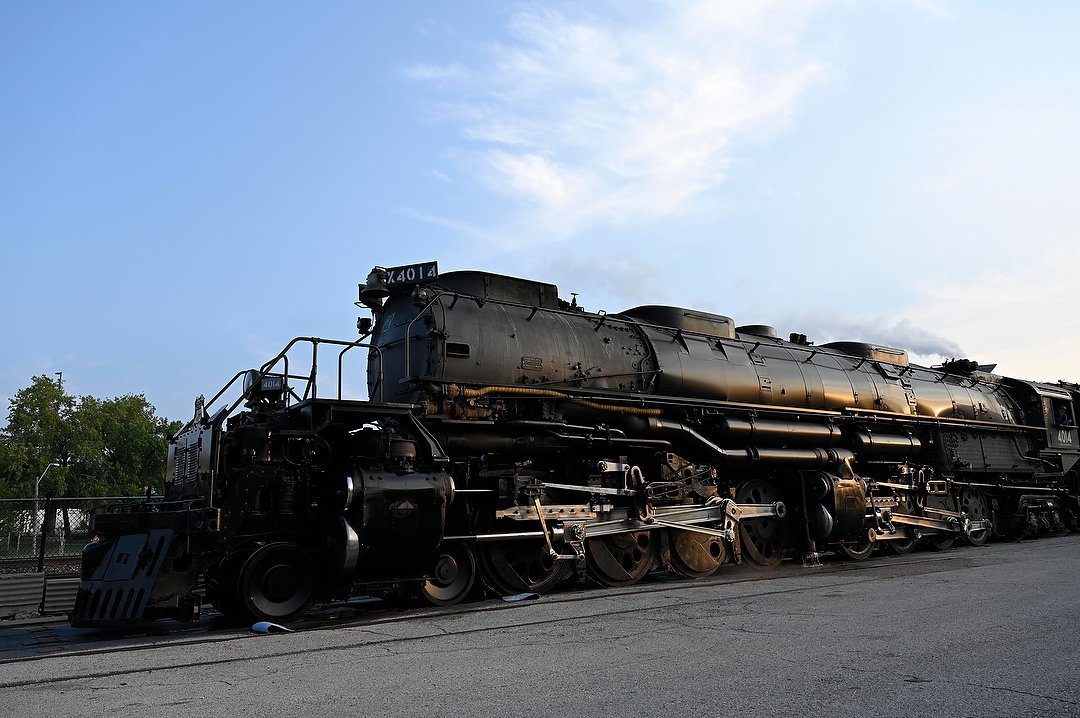
Unfortunately, keeping spectators at a safe distance meant that we were really too far away from Big Boy for an interesting photo from ground level. With wide-angle lenses, if you’re too far from your subject, everything becomes small. Nikon Z 6 II, Aperture Priority, Sunny white balance, ISO 100, 1/125 at f/5.6 in Matrix metering, 0.0 EV, Nikkor Z 24-70mm f/2.8 S lens at 25mm.
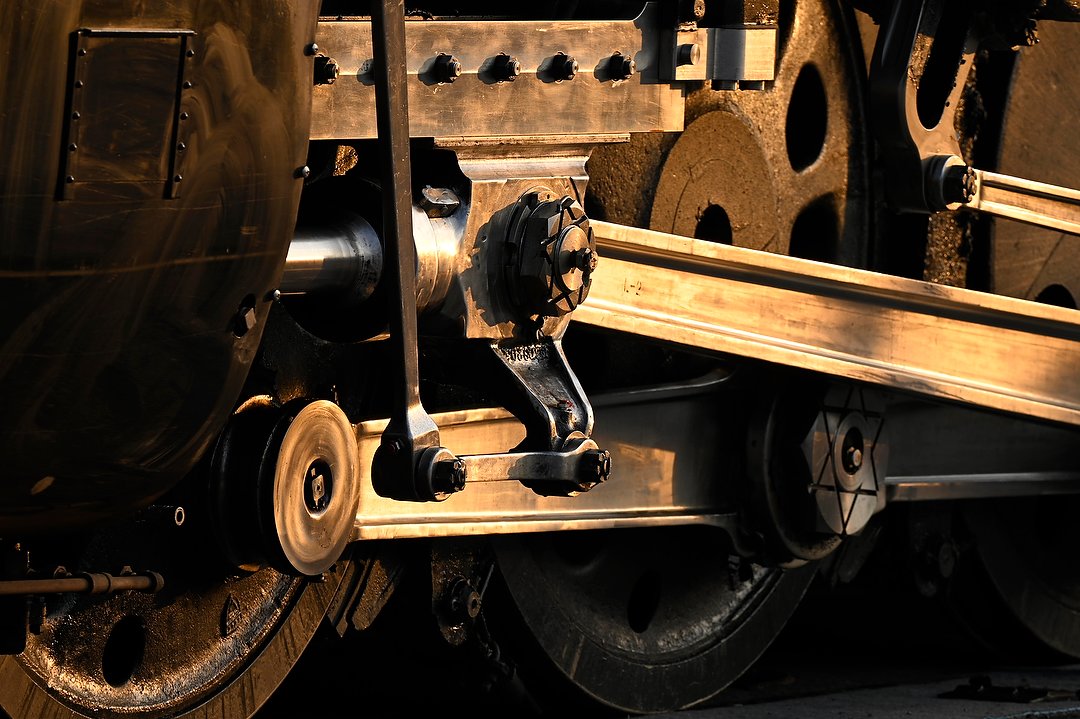
Since wide shots were out (too far away, remember?), I concentrated on tighter images using my telephoto lens. And when the sun poked out, I worked with the resulting light and shadow. Nikon Z 6 II, Aperture Priority, Sunny white balance, ISO 100, 1/80 at f/7.1 in Matrix metering, 0.0 EV, Nikkor VR 70-300mm f/4.5-5.6E lens at 300mm.
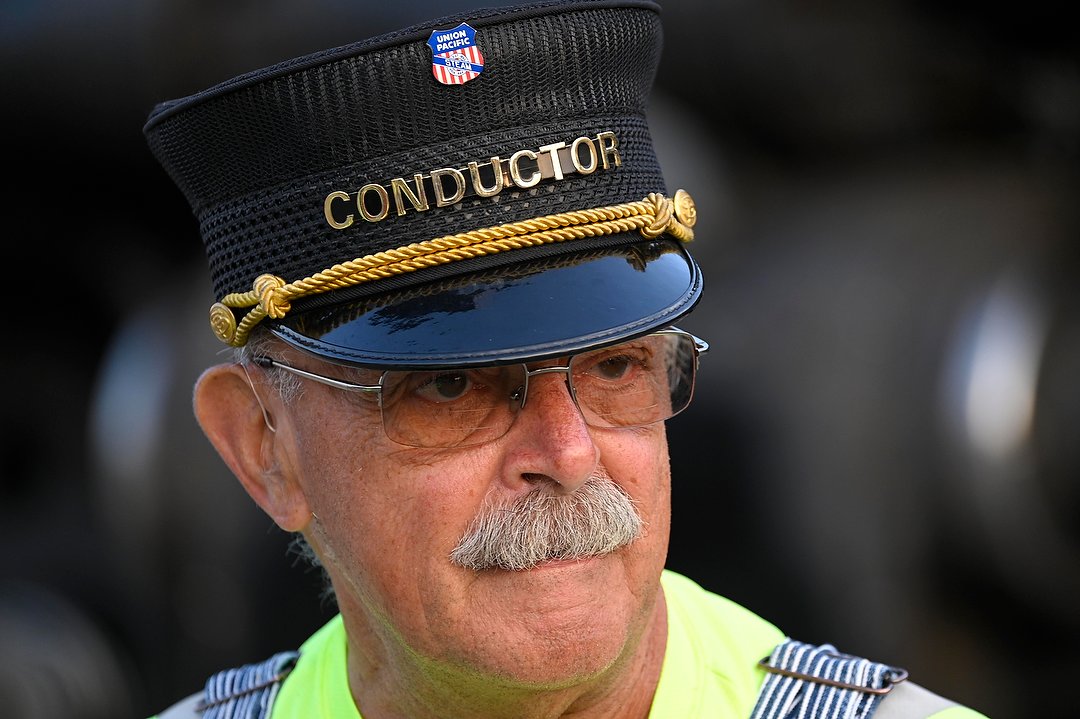
Big Boy doesn’t run without people, so I was on the lookout for good faces and clean (not distracting) backgrounds. Nikon Z 6 II, Aperture Priority, Sunny white balance, ISO 640, 1/160 at f/5.6 in Matrix metering, -0.3 EV, Nikkor VR 70-300mm f/4.5-5.6E lens at 300mm.
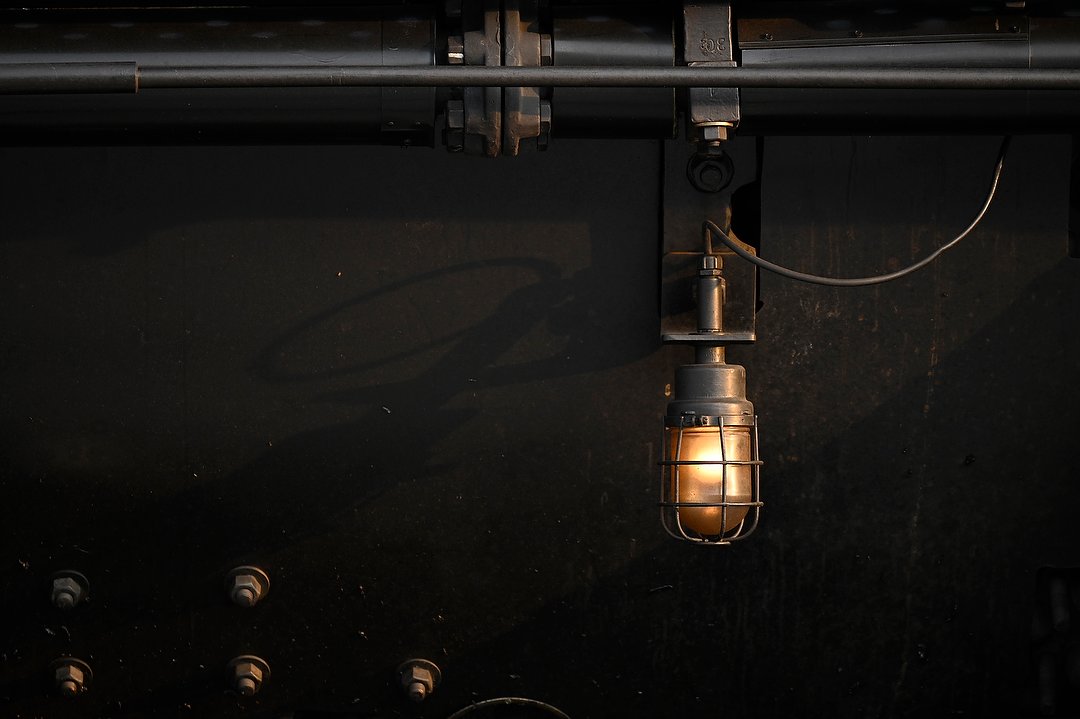
The eye is drawn to areas of brightness, so I’m always watching for a bit of light against a dark background. And when I find that, I have to expose for the light. Literally, in this case. Nikon Z 6 II, Aperture Priority, Sunny white balance, ISO 500, 1/125 at f/5.6 inMatrix metering, -2.0 EV, Nikkor VR 70-300mm f/4.5-5.6E lens at 300mm.
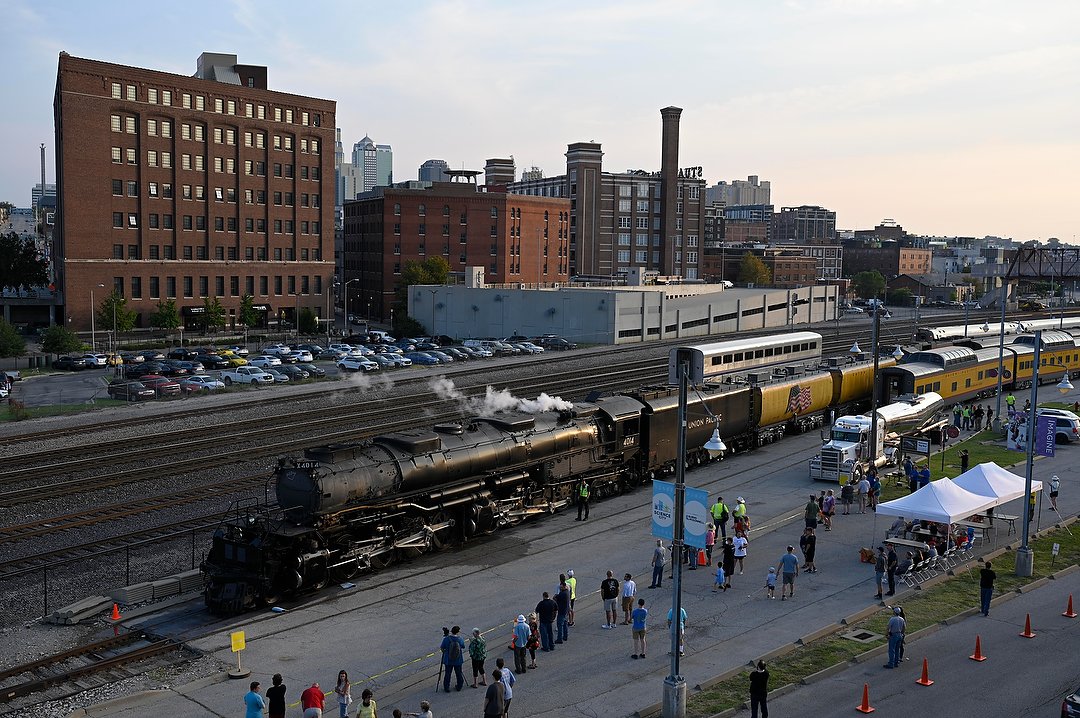
When ground level doesn’t work, I look for a high angle. This is from that parking garage, and while better than from the ground, most of the interesting city skyline is blocked by those two brick buildings. Plus, I don’t love the foreground (people and tents). Nikon Z 6 II, Aperture Priority, Sunny white balance, ISO 100, 1/80 at f/7.1 in Matrix metering, 0.0 EV, Nikkor Z 24-70mm f/2.8 S lens at 37mm.
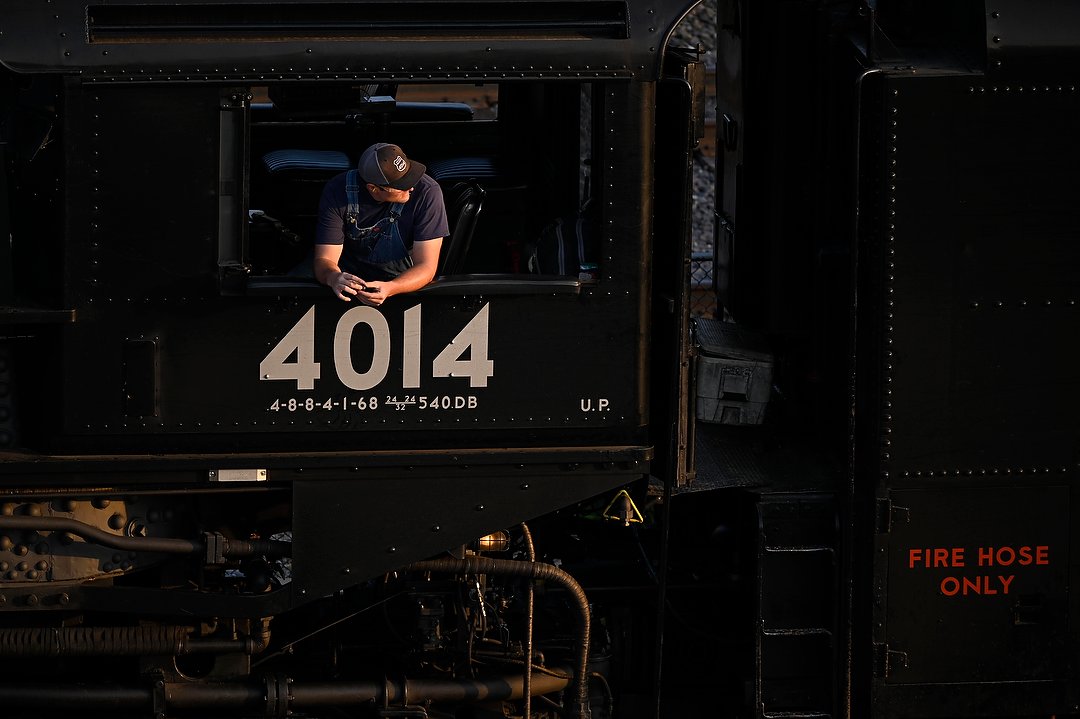
That high angle on top of the garage worked well for some other photos too. The sun coming in at a low angle really lit up the engineer as he leaned out of the cab. Nikon Z 6 II, Aperture Priority, Sunny white balance, ISO 320, 1/320 at f/5.6 in Matrix metering, -2.7 EV, Nikkor VR 70-300mm f/4.5-5.6E lens at 300mm.
As the 8am departure time approached, I made my way back to the bridge, as I felt that would make the best pictures of the train leaving. Thankfully, it moved very slowly heading out, giving me time to make pictures with both my telephoto and wide-angle lenses. Better yet, when it got to the bridge, it stopped, then backed up and sat for a while. Why, I don’t know, I was just happy to have more time to shoot, and a second chance to photograph it leaving.
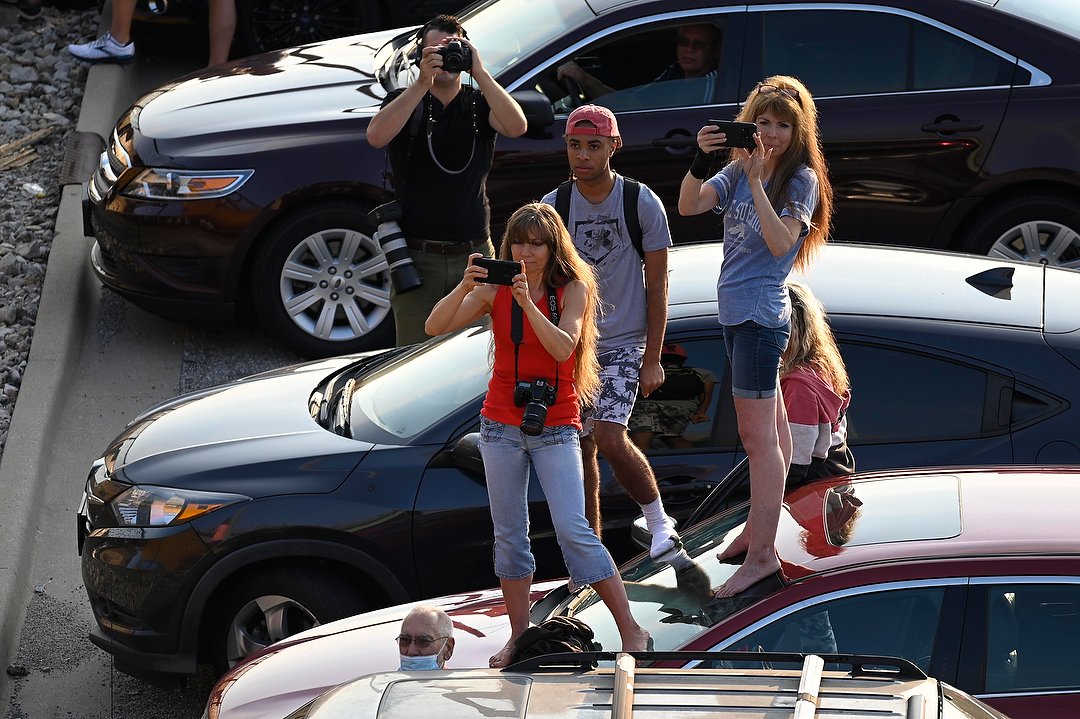
Some of the spectators found their own, unique way to get a higher angle. Glad that’s not my car! Nikon Z 6 II, Manual exposure, Sunny white balance, ISO 100, 1/160 at f/5.6 in Matrix metering, 0.0 EV, Nikkor VR 70-300mm f/4.5-5.6E lens at 300mm.
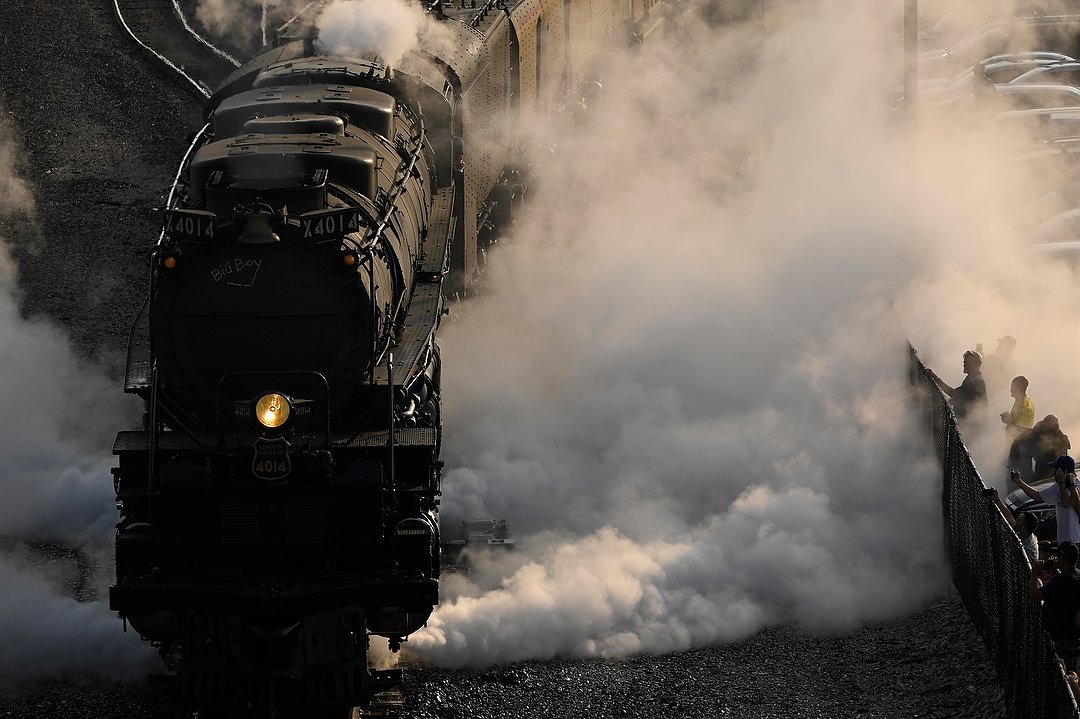
Whenever there’s smoke – or steam, in this case – I like to try to put the sun behind it to help it stand out. These folks got the full steam engine experience. Nikon Z 6 II, Manual exposure, Sunny white balance, ISO 100, 1/800 at f/6.3 in Matrix metering, 0.0 EV, Nikkor VR 70-300mm f/4.5-5.6E lens at 170mm.
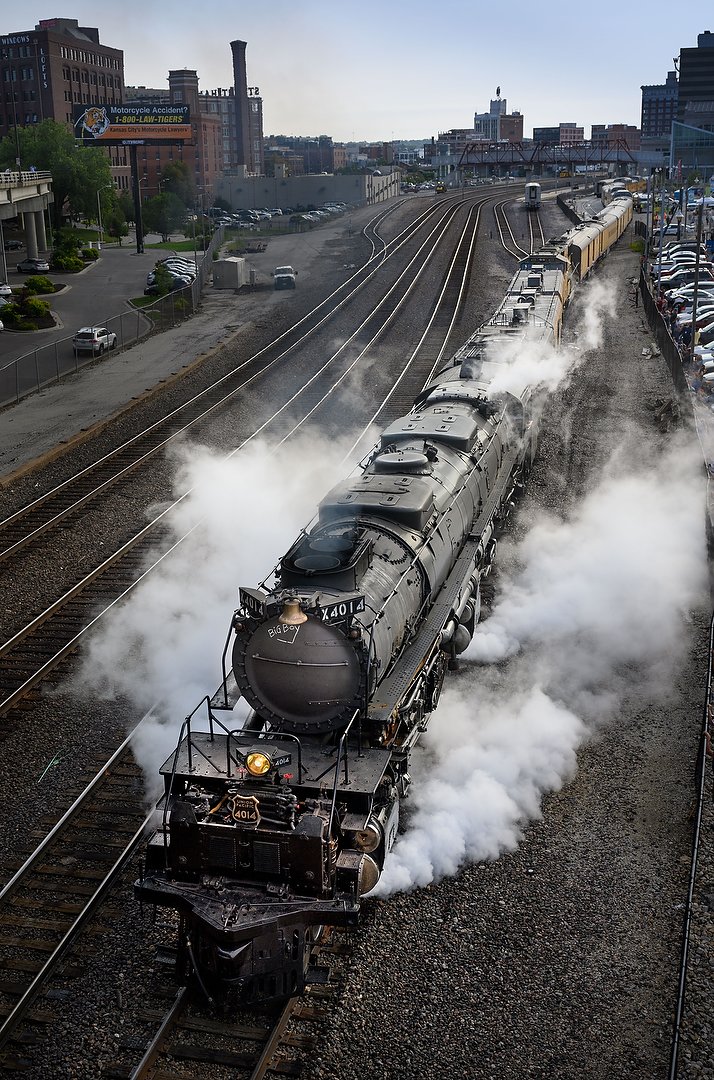
Again, you can see the advantage of a high angle, from a bridge this time, as Big Boy left the station. I also heavily underexposed to hold detail in the bright sky, relying on the camera’s excellent dynamic range to pull up detail in the dark train afterwards, while editing. Nikon Z 6 II, Manual exposure, Sunny white balance, ISO 125, 1/640 at f/6.3 in Matrix metering, 0.0 EV, Nikkor Z 24-70mm f/2.8 S lens at 39mm.
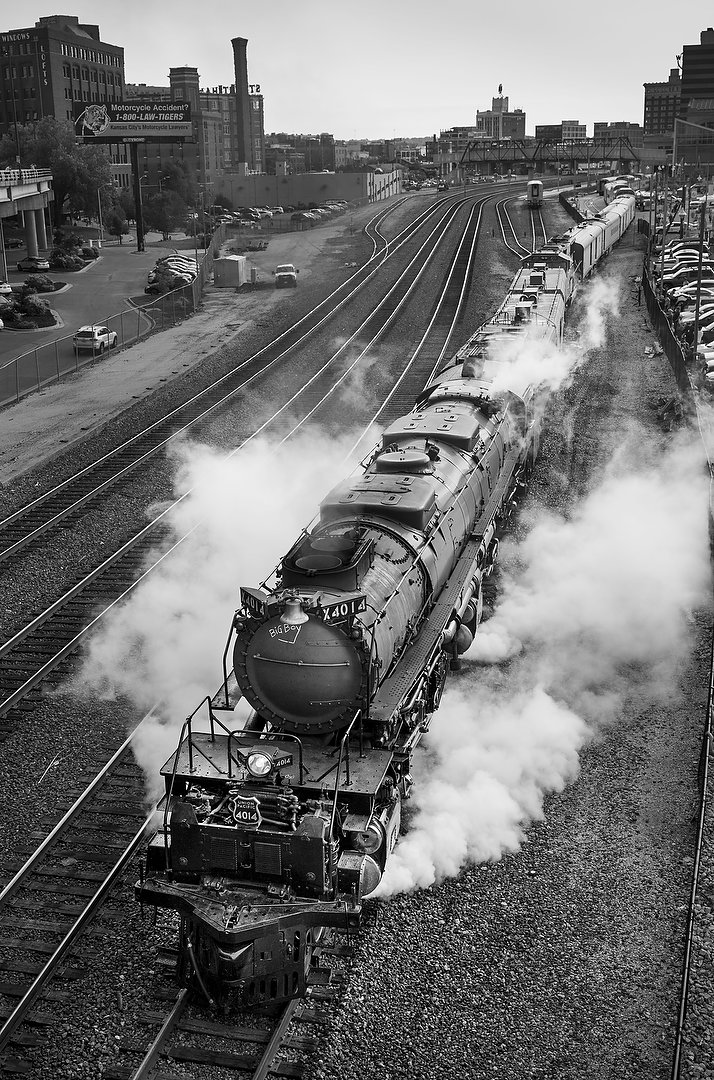
With old things – and a steam engine certainly qualifies – converting the image to black-and-white makes it look like something from the early 20th century. Nikon Z 6 II, Manual exposure, Sunny white balance, ISO 125, 1/640 at f/6.3 in Matrix metering, 0.0 EV, Nikkor Z 24-70mm f/2.8 S lens at 39mm.
Returning home, I downloaded the nearly 500 frames, sorted and kept a little under 200, then edited a few for this post, Facebook and Instagram. All in all, a great morning, a fun shoot, and I sure hope Big Boy returns again in the future. And, if you have the opportunity to go see it, make sure you do. It’s not often you get to see – or even better, photograph – a giant piece of living history!
(If you like this story, please share it with your friends and let them know about the links on photography that I post on my business Facebook page. I’m also on Instagram and Twitter, @reedhoffmann. And if you’re curious about the workshops I teach, you can find them here. And, you can subscribe to this blog on my home page.)

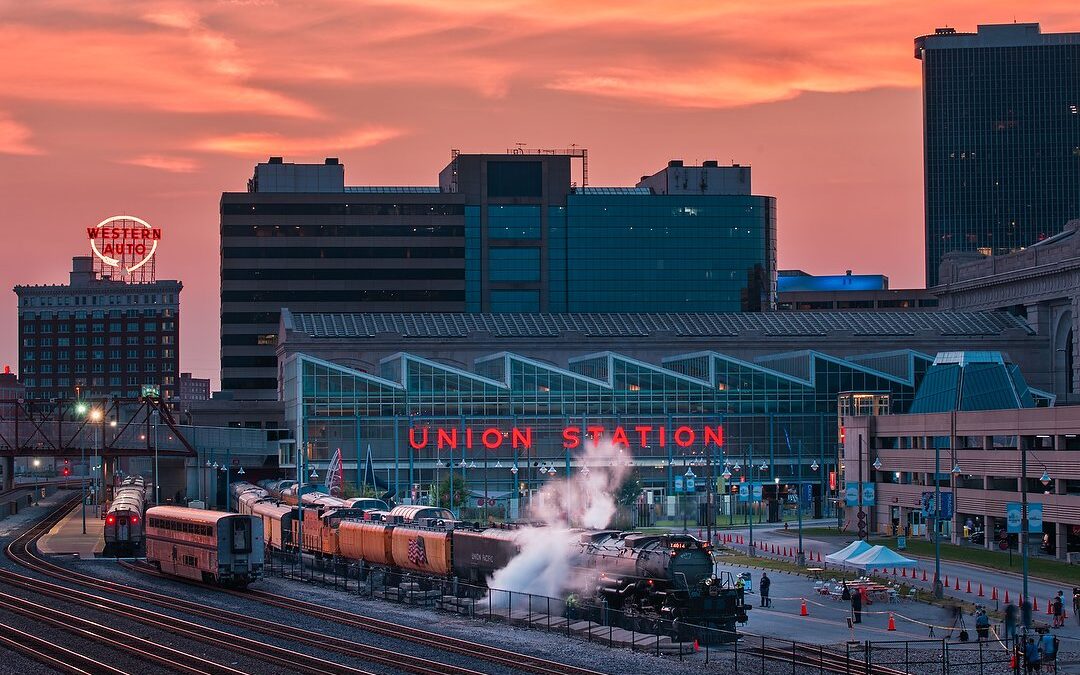
Nice’ I was able to follow and photograph the Big Boy when he came through Texas.
That’s great, it’s a pretty amazing piece of engineering, isn’t it?
choo choo! Nice work
There’s also a great photo exhibit in Roanoke, VA, by the old hotel of the same name, where there are some old trains and a home for O. Winston Link’s photos. Not to be missed!
Alan
Great set of photos and the way you see and think to interpret the scenes. thanks for the tour of the Big Boy and the use of dynamic range.
There’s also a great photo exhibit in Roanoke, VA, by the old hotel of the same name, where there are some old trains and a home for O. Winston Link’s photos. Not to be missed!
Alan